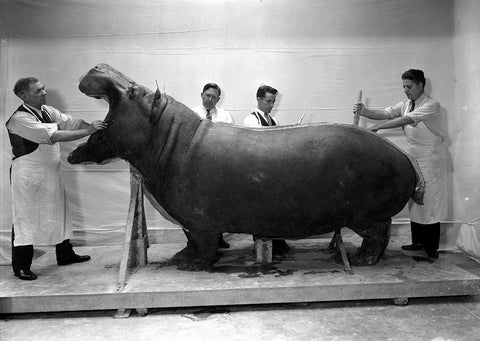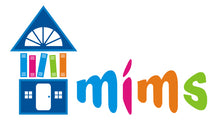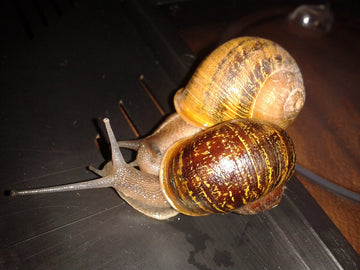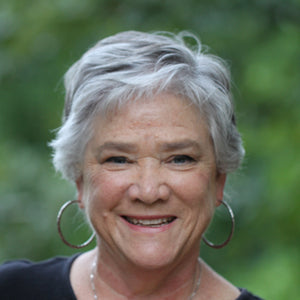60 Developmental Elementary Science Writing Prompts
Science and STEM Writing Journal Prompts
How 14 American Scientists Wrote About Their Observations
In your science classroom, what are the best ways to ask kids to write about science? To answer the question, we'll look at how 14 American scientists actually write about science, and then suggest some writing and journal prompts based on the scientist's work.
The elementary science curriculum relies on observation skills of kids. Our book, FIELD NOTEBOOKS: How Scientists Record and Write About Observation, looks at twelve American scientists to see how they wrote about their scientific experiments and observations. There are mentor texts from scientists in various fields represented here: life sciences, biological sciences, physical science, and medical sciences. The following science writing prompts are presented in a developmental way from the easiest to the most complex. Let's take away the fear of the blank page for our science students.
Write Lists - Simple Science Writing Prompts

Alexander Wetmore (1886-1978), ornithologist or bird scientist, was the head of the Smithsonian Institution 1945-1952. He studied the natural resources of Panama as the Panama Canal was being built, and wrote a book on Panama's birds.
Starting at age seven, Alex wrote lists of birds he observed. Lists are a great way for kindergarten, first and second grade kids to write their observations. A list with three items may be enough for kindergarten, but the skill can grow with the science student's literacy skills. Alex wrote the above notebook at age 14, a list of birds he saw that month.
List writing develops vocabulary, so use it when you introduce domain-specific words. Here are suggested science or STEM writing prompts for lists.
1) Write a list of materials used for an experiment.
2) Write a list of birds seen at a bird feeder.
3) Write a list of scientific vocabulary for a project or lesson.
4) Write a list of your favorite things, perhaps your favorite dinosaurs, or your favorite science books.
5) Based on your personal experience, write a list of things that are surprising about science.
6) Write a list of ocean sounds.
7) From your nature walk, write a list of plants you saw today.
8) Walk around a grocery store, and then write a list of vegetables.
9) Walk around a zoo, and then write a list of animals. Can you also write what kind of animal it was: reptile, amphibian, mammal, bird, insect, marine mammal, fish, or other? Or, write a list of reptiles, write a list of amphibians, and so on.
10) Think of a specific location or event. For that location, write lists of things you hear. Learning to list sensory details is the beginning of good descriptive writing.
11) Think of a specific location or event. For that location, write lists of things you see.
12) Think of a specific location or event. For that location, write lists of things you feel. These are temperature and texture details, not emotions. For example: hot or cold, smooth or rough.
13) Think of a specific location or event. For that location, write lists of things you taste.
14) Think of a specific location or event. For that location, write lists of things you smell.
Discover the exciting world of American Scientists in the book, FIELD NOTEBOOKS. Click the image below for more information.
Want to transform your students' simple lists into scientific discoveries? In FIELD NOTEBOOKS, you'll discover how Alexander Wetmore started just like your students - making basic bird lists at age 7. Those early lists evolved into groundbreaking research that led him to become head of the Smithsonian Institution and write the definitive guide to Panama's birds during the construction of the Panama Canal. The book shows you exactly how to guide your students through this same development, from basic observation lists to sophisticated scientific documentation.
While these prompts are helpful, FIELD NOTEBOOKS provides the complete framework for teaching science writing through real scientists' work. You'll get:
- Original journal excerpts showing how actual scientists recorded their findings
- Grade-appropriate adaptation strategies for K-6
- A full year of mentor texts from 12 different scientific disciplines
- Ready-to-use examples for teaching observation, data collection, and scientific writing
CLICK ON THE BOOK COVER FOR MORE INFO
TABLE OF CONTENTS
- What are Field Notebooks?
- Alexander Wetmore, ornithologist
- Joseph Nelson Rose, botanist
- Bill and Lucile Mann, zookeeper and writer
- Fred Lowe Soper, epidemiologist
- Martin Moynihan, ornithologist
- Margaret S. Collins, entomologist
- William Dall, malacologist and naturalist
- Donald S. Erdman, ichthyologist
- Mary Agnes Chase, botanist
- William Henry Holmes, anthropologist and artist
- David Crockett Graham, missionary and naturalist
- Watson M. Perrygo, taxidermist and exhibits specialist
- George Washington Carver, chemist and agriculture professor
- Start Your Own Field Book
Descriptive Science Writing Prompts
Want to turn your students' basic descriptions into powerful scientific observations? FIELD NOTEBOOKS reveals how botanist Joseph Nelson Rose revolutionized plant classification through detailed descriptions that anyone could follow. Your students will be captivated by his original notebook pages, where simple observations of cactus spines and flower shapes led to the discovery of new species. The book shows you his step-by-step process for teaching scientific description - from basic sensory details to precise technical language - all adaptable for any grade level. Plus, you'll get practical techniques for gradually building your students' descriptive vocabulary, just as Rose developed his expertise from childhood curiosity to professional botanist.
Joseph Nelson Rose (1862-1928), botanist, studied cactus plants and often wrote a description of a specific species.
From that description, another scientist should be able to identify the various cactus species. When Rose described plants he often used specific language, such as a bract to describe a leaf with a special purpose (see the image below). Don't worry about kids using language this specific! But they should be able to do simple descriptions.
For all the descriptions below, use sensory details, but also size, shape, color, and numbers.

15) Introduce specific scientific language from your current lessons and use that language to write a description. For example, use the parts of a flower, animal body parts, or a diagram of an electron.
16) Write a description of a specific plant. Use some of these features: size, shape, color, number, place collected, date collected.
17) Describe the place where you see a certain tree. This helps identify a specific habitat.
18) Describe your pet. First, write a list of sensory details about your pet, and then write a descriptive paragraph using those sensory details.
19) Describe the way your experiment is set up.
20) Describe the results of your experiment.
21) Describe the skin, fur, or feathers of your favorite animal.
22) Describe your classroom.
23) Choose your favorite animal and describe how they move. Include information about speed, direction, what the animals legs are doing, and the location of their movements. For example, do they fly in the sky, swim in a river, or walk through grass?

- Short biography
- Summary of scientific work
- Writing Sample
- Photo from their field notebook
ACCESS ALL TWELVE SCIENTIST'S NOTEBOOKS!
Draw, Then Write Labels and Informational Texts - Exposition Science Writing Prompts
You may be surprised to see drawing listed as a writing task. But for scientists, drawing is an important observation skill. For the writing prompts, we'll add in text in specific ways. Labels and informational text can explain a map, drawing or diagram. It's a good idea to evaluate if labeling will improve the understanding of the drawing.
Ready to unlock the secret tool used by every major scientist in history? FIELD NOTEBOOKS takes you inside Martin Moynihan's and William Dall's original field journals, where their simple sketches and labels changed how we understand octopus behavior and Alaskan culture. The book reveals their exact techniques for combining drawings and text - the same methods used by Darwin, Audubon, and today's researchers. Your students will be amazed to discover that scientific illustration doesn't require artistic talent - it's about careful observation and smart labeling. With FIELD NOTEBOOKS, you'll learn how to guide students from basic labeled drawings to information-rich scientific illustrations.
Martin Moynihan (1928-1996), ornithologist or bird scientist, often drew specimen that he studied.
Notice that scientists almost always add words to the drawing. Here, he's added the date of the observation, along with a note about the drawing on the left: "Should be absolutely symmetrical."

William Dall (1845-1927) Malacologist (study of mollusks), and naturalist was one of the first scientists to visit Alaska after the US bought it from Russia. During that first trip, Dall drew this native female and listed the town where he met her.

24) Draw a flowering plant. Label the flower's parts.
25) Draw a map and use color to add information. Create a key to show what the color means. For example, brown means mountains, green means grasslands, and blue means rivers or lakes.
26) Draw a map of your school and add labels.
27) Draw a person doing something. For example, a person playing basketball, a person reading, or a person playing jump rope. Compare and contract drawings from other classmates and write about how they are the same and how they are different.
28) Draw a landscape that will give information about where a science observation was made.
29) Draw a diagram of an engineering project and add labels. Use color to add information if possible.
30) Draw landscapes to give context to observations.
31) Draw people to give context to observations.
32) Draw a close-up of the inside of the flower. Label the flower's parts.
33) Repeat any of the drawing prompts, but this time use photographs. For instance, ask students to take a close-up photo of the inside of a flower and label the flower's parts.
GIVE KIDS THE FULL LOOK AT TWELVE AMERICAN SCIENTISTS AND THEIR NOTEBOOKS. Look at their original journals.
Narrative Science Writing Prompts
Ever wondered how the greatest animal discoveries were first documented? FIELD NOTEBOOKS takes you into the thrilling world of William and Lucile Mann, where their narrative techniques brought scientific expeditions to life. Through their original journal entries, you'll witness how Lucile transformed a simple Singapore trip into vivid scientific documentation - complete with eight distinctive smells and a baby tiger encounter. The book reveals their field-tested methods for turning observations into compelling scientific stories, techniques your students can use whether they're documenting a playground observation or a classroom experiment. You'll learn exactly how the Manns developed their narrative skills from basic field notes to published scientific works, with grade-appropriate strategies you can implement tomorrow.
William Mann (1886-1960), entomologist and zoologist was married to Lucile Mann (1897-1986), science writer.
Together, this husband and wife team explored the natural world, especially animals. William Mann ran the National Zoo in NYC, and in 1937, they traveled to Asia to collect animals for the zoo.
Unlock the Manns' Scientific Storytelling Secrets in FIELD NOTEBOOKS →
While in Singapore, Lucile wrote about the city with a narrative. She wrote about the places they visited, driving from their hotel to locations in the city. Part of a narrative often includes descriptions. Lucile's story about Singapore included eight things she smelled in Singapore: incense, fried fish, wood smoke, the oil on a syce's hair (a stable man), roasting peanuts, the scent of flowers, the smoke of firecrackers, and unsanitary whiffs better not analyzed.

Lucile Mann bottle-feeding a tiger cub.
Narrative prompts are more complicated writing pieces because the writer must add time order to the story, while still using all the skills learned in descriptive writing. Introduce this skill after lists and descriptive writing.
34) Write a narrative of an experiment. Use these words: first, next, last.
35) Write a narrative about how you travel to school. Use these words: At the beginning, after that, finally.
36) Write a narrative about a scientist's most famous science experiments.
37) Write a narrative about your nature walk.
38) Write a narrative about your lunch hour or recess.
39) Write a narrative about an encounter with an animal.
40) Write a narrative about playing with a friend or your family members.
FIELD NOTEBOOKS includes pages for each of the 14 American scientists to help you TRANSFORM YOUR SCIENCE WRITING INSTRUCTION!
Expository or Informational Science Writing Prompts
Watson M. Perrygo's worked for the Smithsonian Museum creating exhibits from species brought in by scientists.
Once, scientists brought back the body of a hippopotamus. After the hippopotamus was put in place, they also had a card with informational text. The card explained what sort of animal this was, where it was found, and information about the animal.

The card read:
The "hippo" or "river horse formerly occurred in all prominent rivers, streams, pools, and lakes, throughout Africa south of the Sahara. Today this animal is found only in larger bodies of water. Living in herds of from a few to many individuals, hippos spend their days lying partly or wholly submerged in water while at night they go on land along well-established pathways to graze. Although the hippo looks harmless, old males may be vicious. They have been knows to attack canoes and small boats and smash them with their enormous jaws.
Expository writing is more complicated because students must think about how to organize the information. This critical thinking skill is abstract and takes practice to learn. Teach organization skills before students start writing informational pieces.
41) Given ten facts about an animal, sort the facts into categories. Discuss what categories you used and why.
42) Choose an animal to write an informational card for a museum exhibit.
43) Choose a historic object to write an information card for a museum exhibit. For example, choose from these: an arrowhead, a pottery bowl, or a gold ring.
44) Write an informational paragraph about an insect, such as a praying mantis.
45) Write an informational paragraph about a famous person. Choose one of the scientists from FIELD NOTEBOOKS to research and write about.
46) Create an exhibit from one of your experiments. It could be photos of an experiment, rocks collected on a walk, or potted plants. For each item, create an information card.
47) Write an informational text about your school.
Transform Your Students' Observations into Scientific Stories - Get FIELD NOTEBOOKS →
Humor Science Writing Prompts
This science writing prompt may surprise you, too. But scientists often write with humor about their observations.
Fred Lowe Soper (1893-1977, epidemiologist, a scientist who studies the source and cause of infectious diseases, worked in South America to eradicate hookworms.
Hookworms live in human intestines and were thought to spread from poor sanitary conditions. Soper helped communities in Brazil set up community toilets as a way to stop hookworm infections. Here's an excerpt from FIELD NOTEBOOKS:
In 1922 Soper visited the city of Sertäo, Brazil. There, he learned a startling thing. Recent, the city has had a big party to celebrate its first public latrine...In his diary, Soper joked that a celebration party was a "new idea." He made a promise: if the region opened at least 10 new latrines, Soper would make the four-day journey to join the next party. Sometimes scientist write funny things in their notebooks!

This 9-year-old Brazilian boy is holding a board with hookworms and tapeworms that he expelled.
48) Write a comic strip about a scientist's most important inventions.
49) Write five jokes about scientists.
50) Write five jokes about animals
GIVE THIS IMPORTANT BOOK TO KIDS TO READ: FIELD NOTEBOOKS!
Repeat observations over time - Science Writing Prompts
Margaret S. Collins (1922-1996) entomologist (insect scientist), studied termites and was known as the Termite Lady.
Some of Collins's work was studying termite mounds fighting each other. She made observations at regular time intervals during the fights: at the fight's beginning, at 15 minutes, and at 20 minutes. The repeated observations allowed her to determine which colony won the fight.
Here's a map she made after fifteen minutes of fighting.

And another she drew after twenty minutes of fighting. You can see that the termite soldiers have moved positions.

51) For a week, write a descriptive sentence daily about the weather. At the end of the week, combine the daily observations into a paragraph.
52) Observe a life cycle and make repeated observations. For example, watch a caterpillar create a chrysalis and then hatch into a butterfly. The first paragraph is an observation at the beginning of the cycle. Then choose an appropriate time period to make repeated observations and add a paragraph for each observation.
53) Sprout a bean seed in a paper towel. Make daily observations and write about your observations.
54) If you have a garden, make daily observations for a week and write about what you observe.
55) Write about an apple. In Sharon Creech's book, Heartbeat, the art class draws an apple daily, watching it slowly rot. Read the book with the class, a chapter a day and ask them to write about an apple as it changes.
Discover the exciting world of American Scientists in the book, FIELD NOTEBOOKS. Click the image below for more information.
Write Recipes - Science Writing Prompts

George Washington Carver (1864-1945), chemist, agriculture specialist.
While Carver studied crops such as peanuts and taught farmers better farming methods, he was still a chemist at heart. He studied the chemical changes in a peanut as he created cooking recipes as examples of how to eat a peanut.
A final way to write about a science topic is to create and write a recipe!
56) Write a recipe using peanuts.
57) Write a descriptive essay about how a recipe tastes and smells.
58) Write a narrative about a trip to the grocery store or farmer's market to gather the ingredients for a recipe.
59) Write a narrative about a family dinner.
60) Write about your favorite food. Decide if you will write an informational, descriptive, or narrative essay. Will you use humor?
Writing About Science Observations
These are some of the science writing prompts and STEM writing prompts inspired by the book, FIELD NOTEBOOKS. The beauty of FIELD NOTEBOOKS is that it has something for every elementary school grade level. Instructional materials can be tailored for different grades and abilities. This book documents multiple ways that scientists wrote in their science journals, which in turn shows kids how they could write about their scientific observations. It's one of the few student resources that draws upon actual field notebooks.
As your students do hands-on investigations, they should also be recording observations with text and images. Build in enough time in your lessons to allow them the writing practice needed. Scientific inquiry needs data before it can draw conclusions. That data is usually the result of intense, detailed, and specific observations.
Plan your school year: Highlight one scientist each month. FIELD NOTEBOOKS includes journal excerpts from twelve American scientists. One approach is to feature one scientist per month and the writing skill drawn from their work. Daily writing prompts would draw upon that skill, building through the year to more complex writing.
Note about digital science writing prompts: Any of these writing prompts can be adapted for science and STEM prompts delivered by a digital means.
While FIELD NOTEBOOKS is targeted to the elementary curriculum, it provides information valuable for k-12 science education and could be a resource for the middle school curriculum, or the high school science teacher.
Learn More About Field Notebooks by Clicking the Cover.








